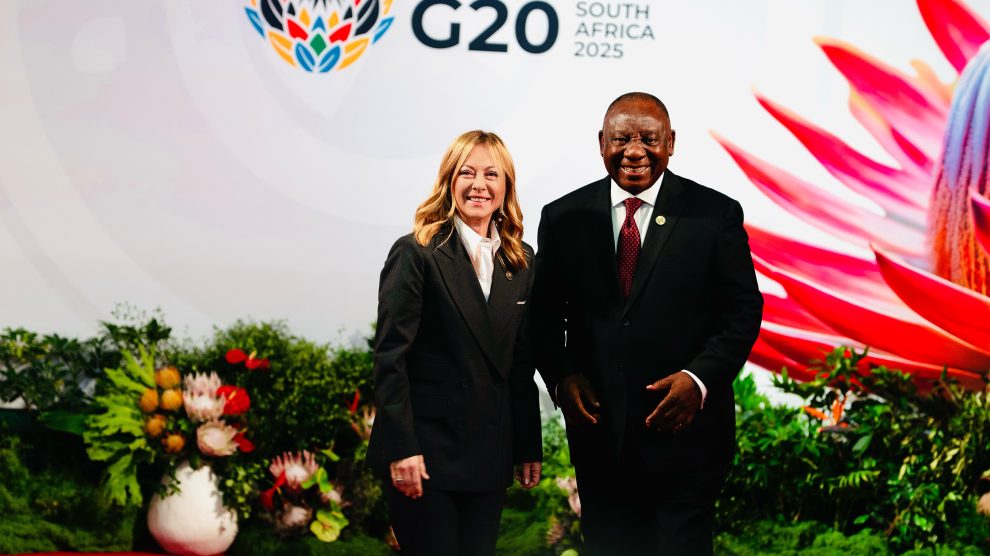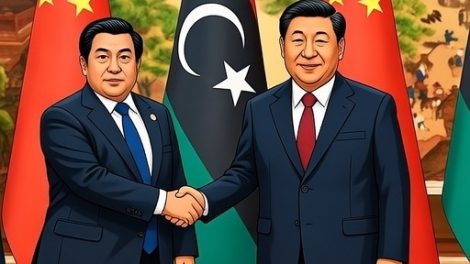Palazzo Chigi highlighted “balanced development” of trade flows, secure cooperation, protection of supply chains, collaboration among like-minded partners, and awareness of risks tied to strategic competition — especially in priority regions such as Africa.
Protocol with Beijing. Italy maintains its dialogue with China, but strictly within the European framework of de-risking and its transatlantic anchor. At the same time, China remains a direct competitor in areas where Rome is investing the most political capital, including Africa, supply chains, and critical infrastructure.
- The channel with Beijing stays open — but…
- After leaving the Belt and Road Initiative, Rome has adopted a model of selective cooperation with Beijing.
- The recent visit to Rome by Chinese Foreign Minister Wang Yi confirmed this approach: reactivating economic channels but with strong attention to financial security and reciprocity.
- Numbers remain lopsided: Chinese imports into Italy are more than four times Italian exports to China.
- Zoom in: Africa — where Italy and China truly compete. Meloni is betting on the Mattei Plan, now intertwined with the Global Gateway, with the Lobito Corridor as its flagship project.
- Meanwhile, Beijing is accelerating:
- During the G20, Li Qiang travelled to Zambia to advance the upgrade of the Tazara railway ($1.4 billion).
- The upgrade will better connect Tanzania and Zambia, boosting flows of critical minerals — a sector already dominated by Chinese firms in Zambia and Congo.
- Tazara is effectively a direct alternative to the Lobito Corridor backed by the US, EU and Italy.
- Meanwhile, Beijing is accelerating:
- Between the lines: Chinese competition is not only economic. Beijing maintains substantial political leverage in Africa despite incidents such as the environmental accident at the state-run Sino-Metals Leach mine in Zambia, which triggered public backlash.
- For Rome, it’s a reminder: talking to China is useful, but Beijing remains a strategic competitor in a crucial continent.
#Melodi in action. In Johannesburg, Meloni also met with India’s Prima Minister Narendra Modi, strengthening a key pillar of Italy’s strategy: the Indo-Mediterranean.
- What they discussed:
- Trade, investment, defence, AI, space.
- Satisfaction with progress on the Joint Strategic Action Plan 2025–29.
- Launch of a new joint initiative against terrorism financing.
- Italy’s support for the Global AI Summit India will host in 2026.
- Why it matters:
- Recent diplomatic and business missions show that India is now a strategic priority for Italian economic diplomacy.
- Rome aims to revive the EU–India trade agreement, seen as a tool to anchor New Delhi more firmly to the Western side.
The Big Picture: The Meloni–Li meeting must be read alongside the consolidation of the Italy–India axis:
- Cooperation with Beijing — but without illusions.
- Strategic competition with China in Africa and across value chains.
- Industrial and geopolitical partnership with India as an Asian counterweight.
- A gradual shift toward an alliance architecture (EU, US, India) that reduces vulnerabilities and expands Italy’s strategic room for manoeuvre.
The overlooked signal: the Meloni–Takaichi embrace. At the Johannesburg G20, Giorgia Meloni shared a warm exchange with Japan’s new prime minister Sanae Takaichi — her first major international summit after taking office. They are now the only two women leaders in the G7, and both leaders highlighted the moment in their public communications.
- There was no formal bilateral meeting, but the political intent was clear: Italy and Japan are aligning aspects of their strategic narratives, particularly in defence, the Indo-Pacific, supply-chain security, and technology.
- Both governments chose to highlight the hug between the two leaders, signaling interest in deepening geopolitical alignment, especially as Rome strengthens its Asian axis with like-minded countries (e.g. India) as complementary pillars.
- Zoom in: The personal feeling between Meloni and Takaichi is building on a political relationship that has grown steadily under previous governments.
- Tokyo sees Rome as an international, valuable partner, also sharing the GCAP sixth-generation fighter program.
- Italy views Japan as a key stabilising actor in Asia and a significant investor in Italian industry.
- For Takaichi, new to the global stage, the exchange with Meloni also strengthens her international profile alongside other women leaders in the G7.
What we’re watching:
- Acceleration of African projects under the Mattei Plan (and Global Gateway) framework, especially around the Lobito Corridor.
- New industrial and tech dossiers with India, Japan.
- A continuing test of Italy’s ability to keep channels open with China without losing strategic ground.





